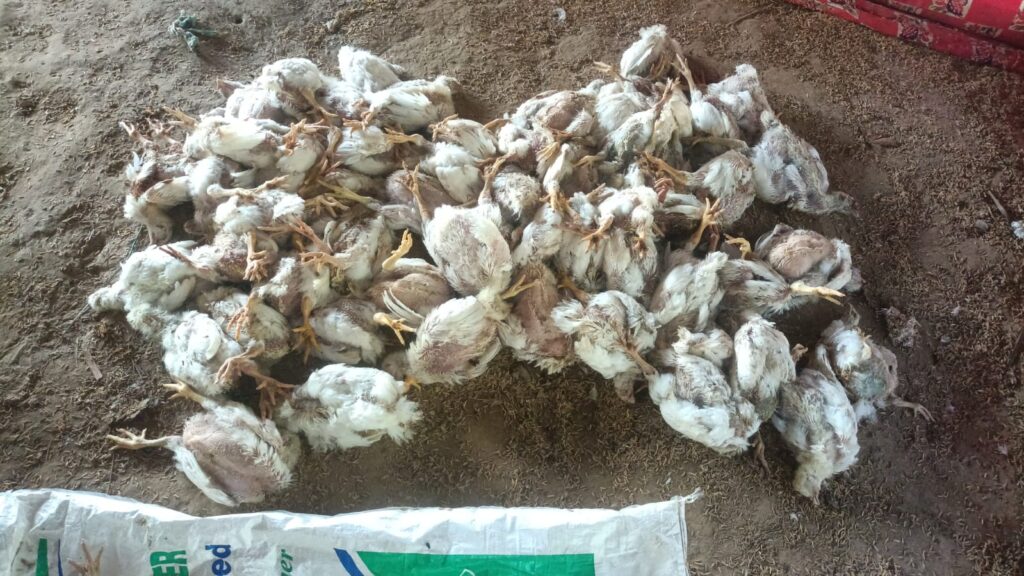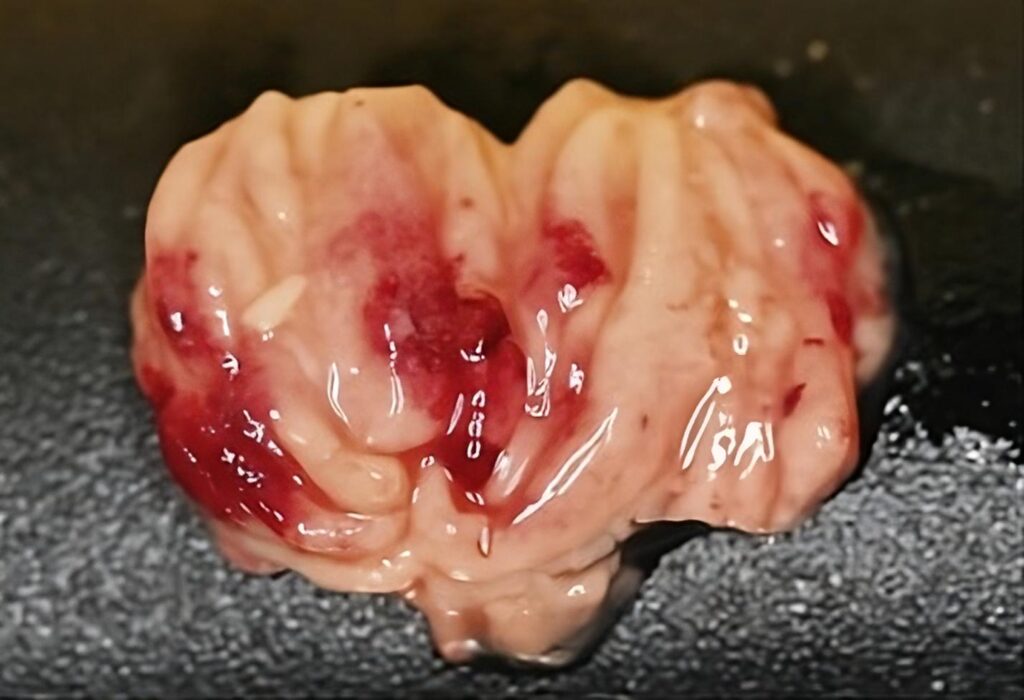The Ultimate Guide to Infectious Bursal Disease (IBD) in Chickens
Infectious bursal disease (IBD), also known as Gumboro disease, is a highly contagious and immunosuppressive viral disease that affects young chickens worldwide. This comprehensive blog post will cover the causes, symptoms, diagnosis, and control of IBD, providing valuable information for poultry farmers and professionals.
What Causes IBD?
IBD is caused by infectious bursal disease virus (IBDV), a member of the Avibirnavirus genus. IBDV has a double-stranded RNA genome and two main structural proteins: VP2 and VP3.
- There are two serotypes of IBDV, but only serotype 1 causes disease in chickens.
- Within serotype 1, there are various antigenic subtypes, including classic, variant, and very virulent (vvIBDV).
- Classic strains were identified before 1980, while variant strains emerged in the 1980s and can evade immunity provided by traditional vaccines.
- vvIBDV strains, first observed in the late 1980s, are highly pathogenic and can cause mortality rates exceeding 50%, sometimes reaching 100% in specific pathogen-free birds.
How Does IBDV Infect Chickens?
IBDV spreads through contact with contaminated feed, water, or bedding. Infected birds shed the virus through their droppings, further contaminating the environment.
- IBDV primarily targets B-lymphocytes, which are responsible for producing antibodies and are concentrated in the bursa of Fabricius (BF).
- The virus infects and destroys B cells in the BF, leading to inflammation, edema, and an influx of macrophages and T cells.
- While cell-mediated immunity helps clear the virus, it can also contribute to tissue damage.
What are the Symptoms of IBD?
Clinical signs of IBD typically appear suddenly within 2–3 days of infection. The severity of the disease varies depending on the strain of IBDV, the age and breed of the chicken, and the presence of maternal antibodies.
- Mild cases: Birds may exhibit ruffled feathers, hunched posture, drooping wings, half-closed eyes, and pale comb and wattles.
- Severe cases: Chickens might refuse to eat or drink, leading to weight loss and dehydration. They may have diarrhea, soiled vent feathers, difficulty breathing, and appear isolated from the flock. In severe cases, they might become prostrate.
- Subclinical infections: These can go unnoticed except for the resulting immunosuppression, leaving the birds vulnerable to other diseases and less responsive to vaccinations.
Mortality from IBD usually starts on day 3 post-infection, peaks around days 5–7, and then declines. Birds that survive the infection often recover clinically within a couple of weeks but experience long-term immunosuppression.

Lesions Associated with IBD
- Gross lesions: The BF is the primary target organ of IBDV. During the initial stages of infection, the bursa becomes enlarged, edematous, and may be covered with a gelatinous transudate. It might appear yellowish in color. Hemorrhages, ranging from petechial to severe, can be observed in the bursa and surrounding tissues. In some cases, the bursa might be filled with a blood clot or coagulated fibrinous exudate. As the disease progresses, the bursa undergoes atrophy and becomes smaller than normal.
- Histological lesions: Microscopic examination of the BF reveals severe lymphocyte depletion, inflammation, and necrosis within the bursal follicles. In later stages, cysts might form within the follicles.

Diagnosing IBD
Diagnosing IBD involves considering clinical signs, gross and histopathological lesions, and laboratory testing.
- Clinical signs and gross lesions: A presumptive diagnosis can be made based on the sudden onset of symptoms, increased mortality, and characteristic lesions in the BF.
- Laboratory tests:
- Serological tests like ELISA and the viral neutralization test (VNT) can detect IBDV-specific antibodies. However, they cannot distinguish between vaccinated and infected birds or differentiate current from past infections.
- Molecular tests, such as RT-PCR and qRT-PCR, are more sensitive and specific for detecting current IBDV infections.
- Virus isolation in embryonated chicken eggs can be performed to confirm the presence of IBDV.
Controlling and Preventing IBD
Vaccination and biosecurity are crucial for controlling and preventing IBD in poultry flocks.
- Vaccination:
- Traditional vaccines: Live attenuated and inactivated IBDV vaccines are commonly used to protect chickens from the disease.
- Maternal antibodies, passed from the hen to the chick, provide early protection but can interfere with live vaccines.
- Farmers need to determine the optimal timing for vaccination based on maternal antibody levels to ensure effective immunization.
- The emergence of vvIBDV strains has led to the use of “hotter” vaccine strains that can overcome higher maternal antibody levels.
- Next-generation vaccines: Vectored vaccines, such as those based on the herpesvirus of turkeys (HVT), and immune complex vaccines offer advantages over traditional vaccines.
- These vaccines can be administered in ovo or to day-old chicks, even in the presence of maternal antibodies.
- Vectored vaccines expressing only the VP2 protein may allow differentiation between vaccinated and infected birds.
- Traditional vaccines: Live attenuated and inactivated IBDV vaccines are commonly used to protect chickens from the disease.
- Biosecurity:
- Disinfection: IBDV is highly resistant to environmental conditions and many disinfectants. Therefore, poultry houses should be thoroughly disinfected using compounds with proven activity against IBDV.
- Hygiene and movement control: People, equipment, and vehicles can carry IBDV, so strict hygiene practices and movement control are essential to prevent the introduction and spread of the virus.
Treatment of IBD (Gumboro)
In some cases treatment become inevitable to reduce economic losses, with other control measures use of these 3 medicines is seen to improve immune status of birds infected with IBD and other immunosuppressive viruses.
Nexamune – It is a strong immune booster which strengthens the adaptive immune system and improves antibody titers which fights infections. Nexamune act as a complete armor for the chicken’s immune system as it stabilize the immune cell membranes with Vitamin E, when Vitamin E discharges while fighting with free radicals it get charged by Vitamin C (Ascorbate) which get activated by Glutathione Peroxidases. NADPH which is made up of niacin refund the lost capacity of Glutathione. In this way a chain of antioxidants are required to work in tandem to provide strong immunity. These all contents are present in Nexamune. Apart from this, nexamune also contains herbal extracts of Ashwagandha, Amla and Tulsi which proven old age tract record in boosting immunity.
Apart from this 2 other products Virocon (proprietary herbal antiviral preparation) and Vitaden H are also works synergistically with Nexamune and helps in reducing mortality.

Conclusion
IBD is a significant threat to the poultry industry worldwide. Understanding the causes, symptoms, diagnosis, and control measures of this disease is crucial for protecting chicken flocks and ensuring their health and productivity. By implementing effective vaccination programs and maintaining strict biosecurity protocols, poultry farmers and professionals can minimize the impact of IBD and safeguard the well-being of their birds.








